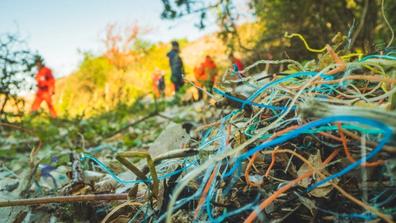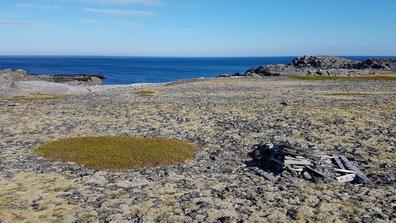Marine litter does not take into account national borders or vulnerable and valuable landscapes. Waste that has gone astray also ends up in protected areas, where marine litter constitutes a particular threat to nature and fauna.
Beach clean-up can damage natural assets that should be protected through both clean-up and protected status. It is therefore important to check whether the area you will be cleaning in is protected and, if applicable, which protection provisions apply to the area in question.
Protection types
The four most important protection types in Norway are:
- National park
- Landscape conservation areas
- Nature reserve
- Protected marine areas
National parks are large natural areas with distinctive or representative ecosystems. They can also be landscapes free of any major interventions in the landscape. The large, protected areas ensure that natural interaction is not disrupted, and they form a key part of the efforts to prevent plants and animals from becoming extinct.
Landscape conservation areas are natural or cultural landscapes of major ecological, cultural, or recreational value. Cultural heritage that contributes to the uniqueness of the landscape is also included. This protection type is often used to preserve cultural landscapes that are actively used.

Nature reserves are the strictest type of area protection pursuant to the Nature Diversity Act. These are areas that contain endangered, rare, or vulnerable landscapes, that represent a specific habitat, have a particular importance in biodiversity, constitute a particular geological occurrence or have particular scientific value.
Protected marine areas are created to protect marine assets or assets that are ecologically necessary for species that live on land.
The criteria for creating protected marine environments are the same as the criteria for nature reserves. In addition, protected marine areas can also be created to preserve distinctive or representative ecosystems that are free from major interventions in the landscape. They can also be created to preserve functional ecological areas for one or more species. The purpose of protection can relate to the seabed, water column or surface, or a combination of these.
Limited right of access
Protected areas may have anything from total bans on access and prohibitions against all damage and destruction of vegetation, animal, and bird life to minor restrictions such as periodic bans on access or prohibitions on pollution and noise. This information is provided in the protection regulations and the management plan for the protected area in question.
When not to perform clean-up activities?
All or parts of the protected area may be subject to bans on access during certain times of the year. These periods usually fall during spring and early summer and exist for consideration of nesting birds. Certain areas are also particularly important to migrating birds during autumn or for overwintering.
Where to find information?
- Regulations and protection provisions for protected areas can be found at Lovdata
- An overview of nature reserves and protected areas on maps can be found in Rent hav
- Other useful tools for information about what must be considered in different protected areas include Kystinfo and Miljøstatus.
If you are in doubt about the rules that apply or whether an activity or initiative in a protected area is subject to permission, please contact the administrative authority for the protected area in question. This could be:
- The Norwegian Nature Surveillance
- The National Park Manager
- The County Governor
- Local authority or local administration authority
Can beach clean-up be subject to applications?
Beach clean-up is generally not subject to applications, but if you intend to use special equipment or clean in an area subject to traffic restrictions, you may need to apply prior to beach cleaning. Please contact the administrative authority to clarify whether the clean-up operation requires a permit. As a rule, the County Governor will be the administrative authority, but in certain cases, this responsibility has been delegated to a local authority or board.
If the pdf does not include images, please click Cancel and try again.





